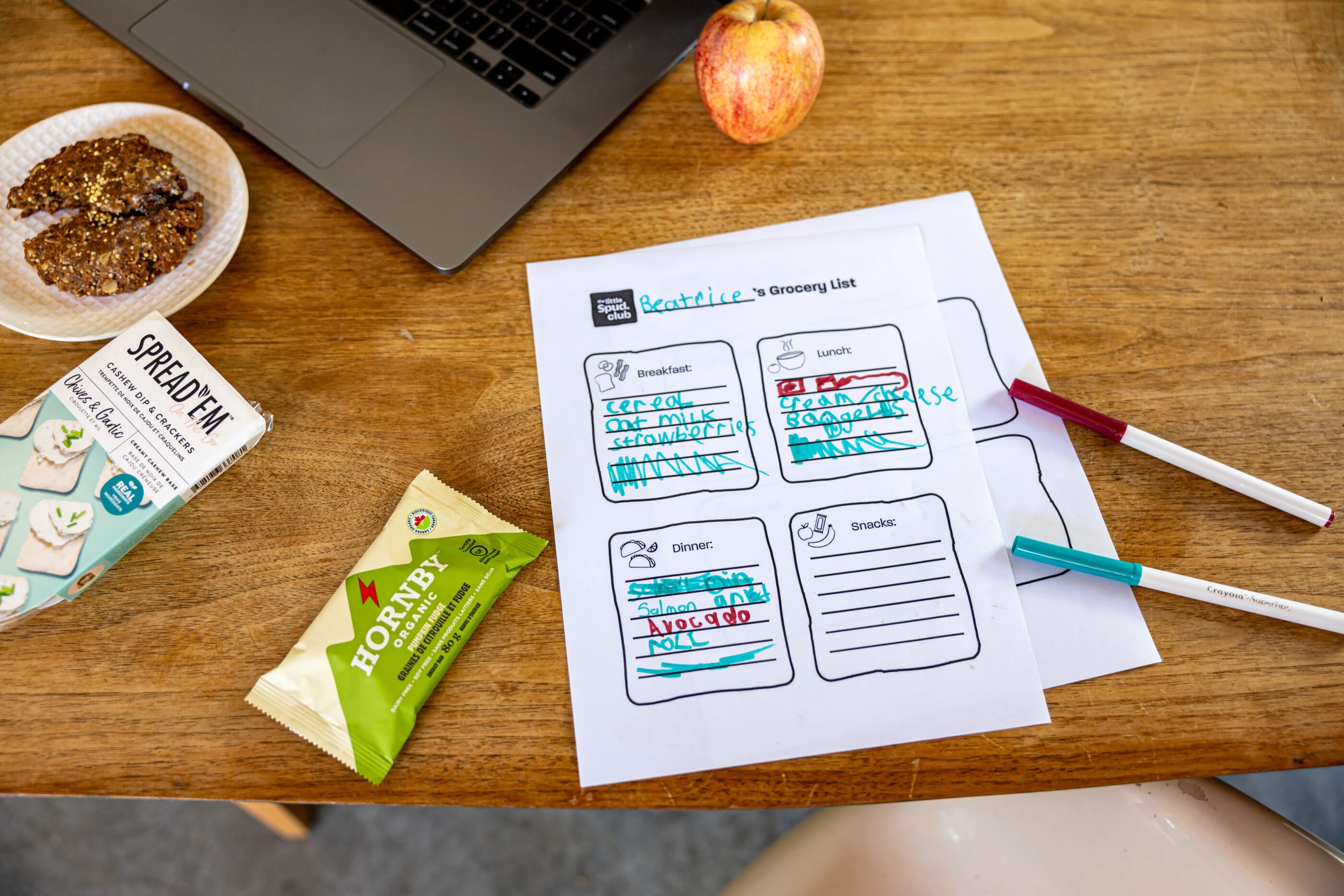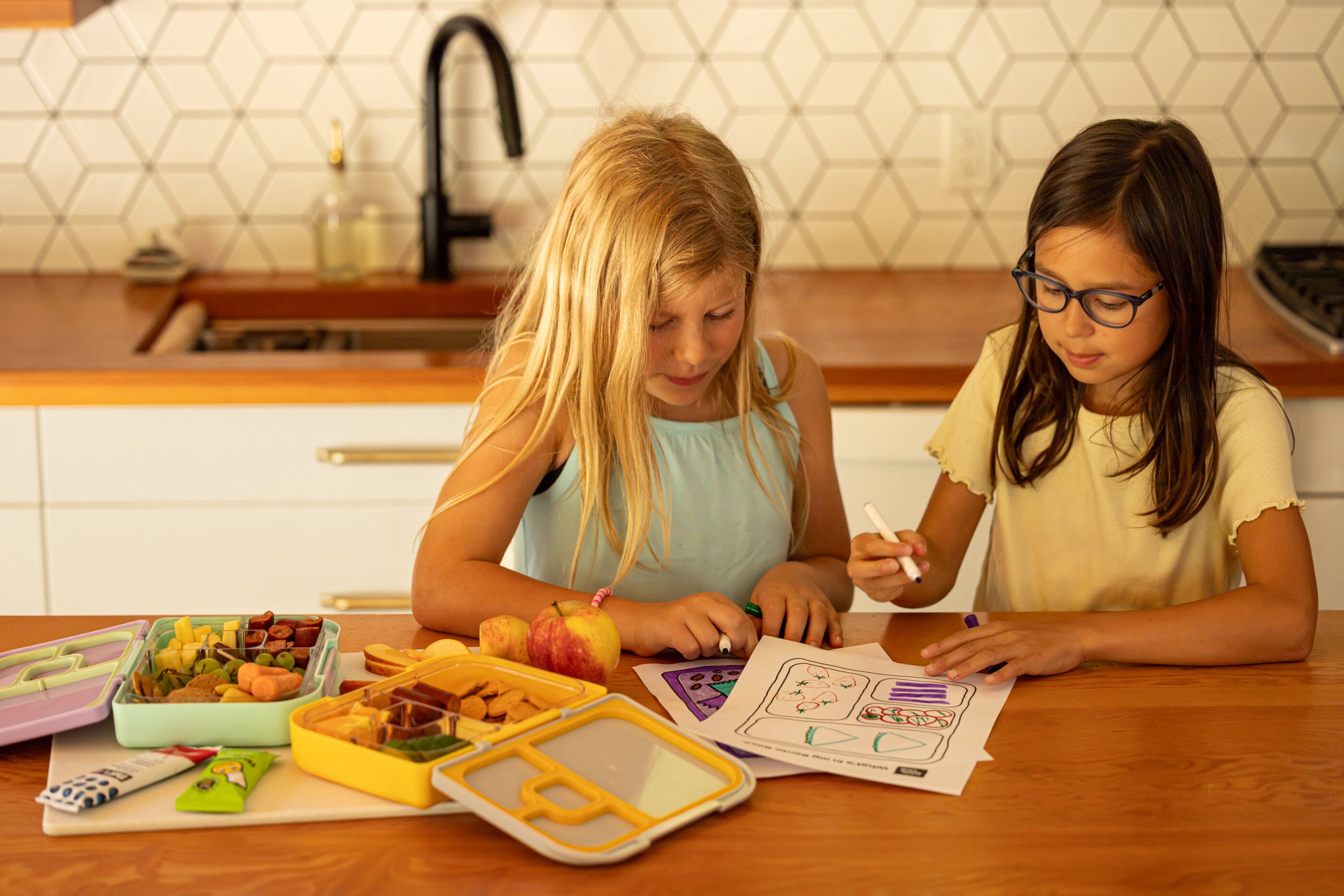These chickpea peanut butter muffins are naturally sweetened with maple syrup and banana, and can…
Helping our kids nurture a healthy relationship with food starts at home. That feels like a lot of pressure doesn’t it?! Don’t worry – if you feel as though you haven’t been doing a great job of this, you’re not alone, and you haven’t ruined your child’s relationship with food (insert sigh of relief…phew). That said, simple changes can go a long way, and even just having more awareness of your words and actions can be a great first step.
The language and behaviors we as parents use around food and our bodies have a huge impact on how our kids feel about eating and their changing bodies. As a pediatric dietitian and mom of three, I am particularly passionate about educating parents on how to make changes in their homes to help foster a healthy relationship with food in their kids. And I know this is important to you because you’re here reading this post!
Let’s dive into five different ways you can make changes in your own household to support this goal:
1. Create a food-neutral home
A food-neutral home means detaching moral judgment from food (and therefore, whoever is eating it). All foods are treated and talked about equally, without categorizing them as “good” or “bad”, “healthy” or “unhealthy” based solely on nutritional content. It teaches kids that food is just food; sometimes it offers lots of nutrition and other times—it helps us to celebrate and offers joy. Both valuable! This approach prevents children from feeling ashamed about their food choices and allows them to explore different food without feeling guilty or ashamed.
To create a food-neutral home, avoid moralizing labels and simply call foods by their names. For instance, refer to a lollipop as a “lollipop” rather than a “sugary treat” and an apple simply as an “apple,” not a “healthy snack.” Speaking of snacks, as a dietitian mom, I’ve partnered with Spud to create a back-to-school page on the Spud website, with my favourite nourishing and sustainable school-safe snacks for kids. One way to improve your child’s relationship with food is to let them help in choosing snacks for their lunches. Getting them involved by allowing them to pick two to three choices on their own, makes trying new foods fun, and fosters bravery and independence. I talk more about getting your kids involved in food prep and planning below too. You can check out our Little Spud Club as well, where there are lots of resources for both parents and kids to get them more involved in the kitchen.
Embracing food neutrality doesn’t mean disregarding nutrition. As parents, it’s still our job to offer a variety of foods daily, including vegetables, fruits, whole grains/starches, proteins, and fats, which will ensure your child has ample opportunity to get the nutrition they need for healthy growth and development. Boundaries (aka saying “no”) is still ok too. Curious about this? Read more about how to create a food-neutral home.
2. Provide regular and random access to “treat foods”
Tightly restricting certain foods based on their nutritional content disrupts a child’s long-term relationship with food. Scarcity leads to an increased desire for those restricted items (AKA they want them even MORE). Enforcing strict boundaries on “treat foods” or any food intensifies the child’s preference and obsession with them, putting these foods on an even higher pedestal.
One sign that this may be a concern is if your child is unable to control themselves around “treat foods” offered at out-of-home events (such as birthday cake, candy or potato chips), or they start to sneak and hide “restricted foods” from you. Now I don’t like to sound alarm bells for parents if they notice their child sneaking food because it could just be a normal developmental phase stemming from curiosity and “boundary-testing”. But it sneaking, hoarding, and/or hiding certain foods persists, it might be time to reflect on why it’s happening and maybe even address it.
The solution very well may be to offer treats more often—randomly and regularly. Some examples of this might be adding a brownie or two to their dinner plate, going to the ice cream shop “just because” or adding a plateful of cookies alongside a nutritious snack and allowing your kids to enjoy as many as they want of each food. Regular access without restrictions reduces the excitement and allure, often allowing kids to eat more intuitively and have better self-regulation.
3. Ditch diet culture talk and behavior at home
If you’re a parent, consider your own relationship with and language around food, as kids are highly receptive to it. Strengthening your relationship with food is crucial for nurturing your child’s relationship with food.
Diet culture is deeply ingrained in society, influencing our daily decisions on movement, eating, and body talk. Diet culture glorifies thinness, emphasizing rigid eating patterns, restrictive food rules, and extreme exercise routines all with the goal of shrinking, to obtain a certain body shape and size (often in diet culture, this is masked as achieving “optimal wellness”).
We need to reject the diet culture narrative in order to reduce the risk of disordered eating with our kids. Connect with a registered dietitian experienced in intuitive eating to explore your relationship with food.
Luckily, there are things you can do to start dismantling diet culture in your home right away:
- Avoid negative body comments for yourself and your child. Focus on their unique qualities like creativity, determination, and empathy.
- Practice food neutrality as mentioned above.
- Refrain from discussing restrictive diets or using exercise to compensate for food. Instead speak about joyful movement, referring to activity as a means to help your body and mind feel better.
4. Trust that kids can listen to and trust their own bodies
Establish a regular family mealtime routine for positive bonding and fostering a good relationship with food. Connection and bonding time at the table allows kids to enjoy food with their loved ones, fostering a positive relationship with eating, trying new foods, and learning about their food preferences. Family meal times can be game-changing for kids’ relationship with food now and into the future. It is essential, however, that foods are offered without an underlying agenda.
Well-meaning parents may apply pressure on their kids to eat a certain volume or type of food that they have served on their plate. E.g. “take a few more bites” or to “finish dinner before dessert”. Unfortunately, this communicates to the child that they can’t trust their own body, and instead must follow external cues (and rules) around food (listening to their parents about how much and what to eat).
Instead, avoid pressuring children to eat specific amounts or types of food, and instead allow them to trust their own hunger and fullness cues at meal and snack times. Encourage food exploration and creativity during meals to create pleasant experiences with food, regardless of what and how much is eaten.
6. Get kids involved in food prep and packing lunches
This might be one of the easiest ways to get your kids excited about trying new foods while fueling their need for autonomy and independence! When children have a say in what they pack for lunch, it gives them that sense of control that they crave. On top of this, they also feel proud of helping prepare and pack their lunch, infusing more joy in the act of eating it!
Giving your child a structured choice allows for this sense of control while keeping things simple and straightforward. For example, you can ask your child “Would you like leftover pasta or a rotisserie chicken wrap for lunch?”. Give them the choice of which snack they want to add in, saying something like “Would you like “An apple with pumpkin seeds” or “a granola bar and string cheese”. If you’re looking for my top kids’ school snacks, don’t forget to check out our dietitian-curated school snack page here! And don’t forget to allow them to choose a “just because” food to toss in there such as a rice crispy square, some chips or a cookie.

Meet Sarah
 Sarah Remmer, is a registered dietitian (since 2006) mom of 3 and the proud founder and President of The Centre for Family Nutrition, a Calgary-based nutrition counseling practice that specializes in prenatal, infant and child nutrition, that specializes in prenatal, infant and child nutrition.
Sarah Remmer, is a registered dietitian (since 2006) mom of 3 and the proud founder and President of The Centre for Family Nutrition, a Calgary-based nutrition counseling practice that specializes in prenatal, infant and child nutrition, that specializes in prenatal, infant and child nutrition.








